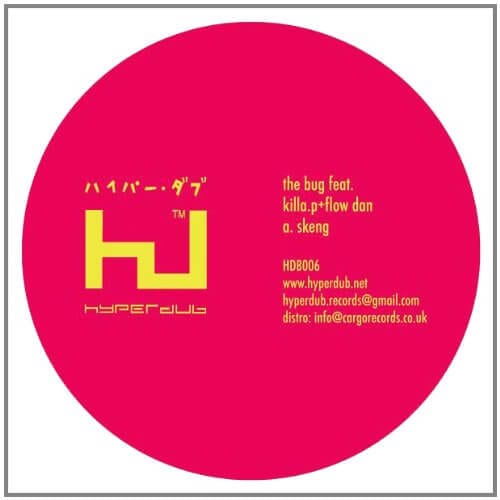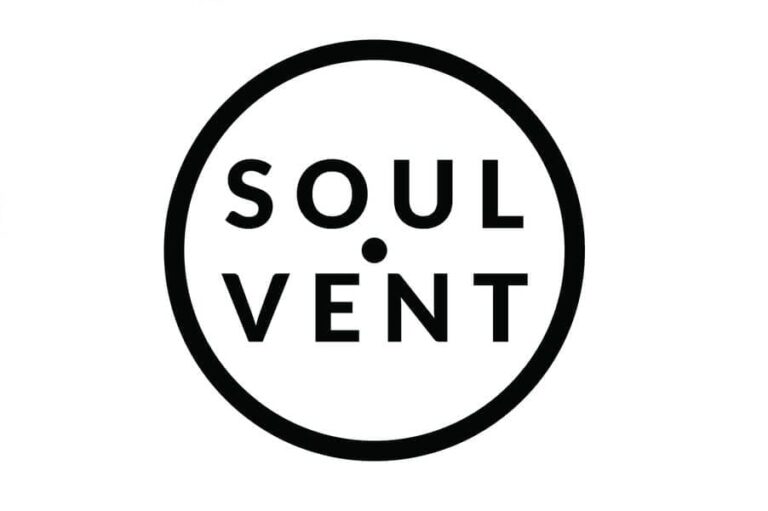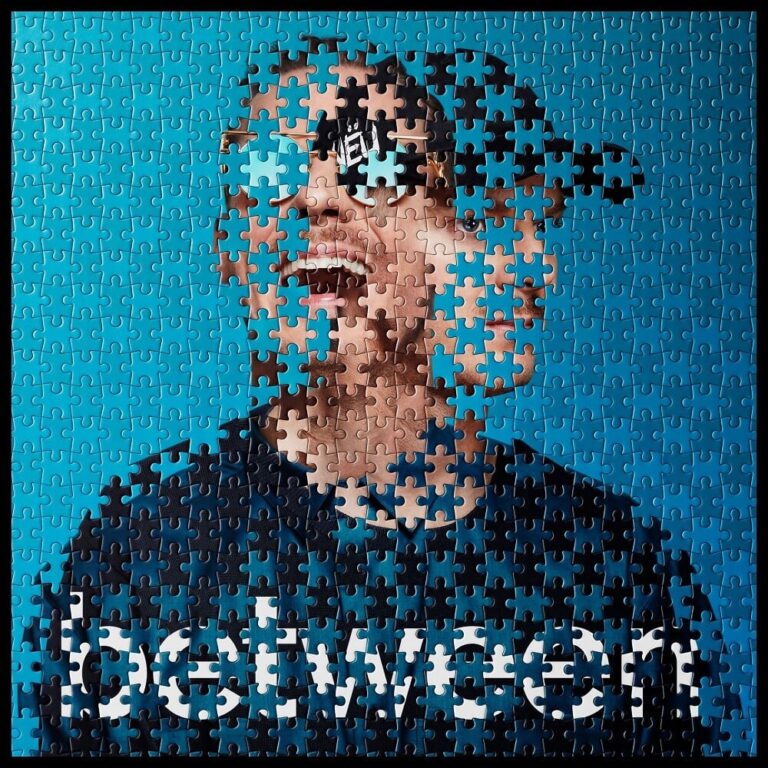No other track in UK bass culture has bridged the worlds of grime and dubstep, achieved cult status or enjoyed such a long and resonant life in quite the same way as The Bug, Flowdan and Killa P’s Skeng.
12 years after it first circulated on dub at key dances such as FWD>> and DMZ, Skeng remains as unifying and vibe-inciting as it did when it first landed. An anomaly among anthems; era-defining tunes are traditionally worked so hard they have to be retired. But Skeng appears to have bypassed that. Still vital, still requested, still causing boats to feel like they’re about capsize at Outlook Festival every year… If anything, Skeng’s seismic ripples are creating bigger waves every year.
To understand, or at least try to fathom, why Skeng became the phenomenon Killa P’s lyrics have always suggested it would become, we need to understand the time and context: Skeng took seed in 2006, a pivotal year for both grime and dubstep, two fruits that blossomed from the same UKG tree at pretty much exactly the same time five years prior.
Fronted by larger than life MCs and lyrics the disenfranchised youth could relate to, grime quickly bubbled over into the mainstream with acts such as Dizzee, Wiley and Kano leading the charge. Dubstep, meanwhile, was on a much slower bubble, unbeknown to anyone quite how rapidly it was about to accelerate and infiltrate so many nooks and crannies of electronic music.
Rootsically related, both birthed in London and characterised by very similar elements such as the 140ish tempo, tendencies to halftempo beats and high levels of bass; yet the two worlds operated pretty autonomously. The Bug, however, flexed between the two with ease.
“I found myself in the centre of dubstep and I was very happy to be friends with some great people. But I was always on the peripheries. That was self imposed. I didn’t want to be associated with just one scene,” explains The Bug, real name Kevin Martin. At the time he’d been writing his third album London Zoo and was living in his studio around the corner from Plastic People, the club where seminal dubstep night FWD>> was incubating the dubstep movement.
“I was in London during the development of jungle and drum & bass and many peers making that music would say how hard it was to break into that scene, almost impossible. But with dubstep I was welcomed with open arms. Kode9 first invited me to FWD>> The audience was 10 people… Mala, Benga, Kode9, SGT Pokes and their girlfriends. If I’m exaggerating then it’s by 10 people. But then, as you know, it just blew up. But, if I’m honest, it was grime that was blowing my head off….”
“I’d been so into Roll Deep from early days,” he continues. “The energy, the punk like attitude, the behaviour I saw on and off stage. It was a musical form being expressed by kids who needed an outlet and had no other. Exactly where I came from. It resonated with me.”
Ready Fi Dem
It’s fitting, then, for Skeng to be voiced by two Roll Deep members. Kevin’s first choice of Roll Deep MC to work with was actually Riko Dan but they didn’t quite hit it off on this particular occasion (“He behaved like a c*nt” jokes Kevin, who has since made Ice Man with Riko in 2016) But Flowdan was a different story.
“Flow’s a solider,” says Kevin. “He came and worked with me when I as a freak to grime and to many dubstep people. But he’d tour with me and play to crowds totally out of his territory and he continues to do so.”
“I never knew the rules,” admits Flowdan. “I wasn’t aware of the division between grime and dubstep. I didn’t know about that, but my peers made me know there was a division. They were like ‘so you’re a dubstep MC now?’ I would always say ‘how can I be? I’m grime forever. If I hear a beat I don’t stop and think ‘is this my genre?’ Grime for me isn’t a tempo. It’s an attitude and a culture. So I don’t think about not using my grime style on a different genre or tempo. I’m a grime artist in whatever space you put me in.”
Prior to Skeng, Flowdan and The Bug had already worked on the Ninja Tune released Jah War. Identifying a shared work ethic and vibe, they agreed to work on another session which would eventually lead to Skeng. This time Flow decided to bring a killer weapon…
“I didn’t know Kevin from anyone,” admits Killa P. “I met him the day we made Skeng. Flowdan knows I freestyle any track any time so I think he brought me as a secret weapon just in case. Like maybe ‘if I don’t like the beat, Kills might like it?’ That’s how we bounced sometimes…”
That was exactly how things bounced the night Skeng was made. Flowdan and Killa arrived late at The Bug’s studio and did the session they intended (for a tune that never actually came out) Flow was ready to go but Killa was having none of it.
Mi don’t really care if it’s early or late
“This is the maddest thing. Skeng almost didn’t get made at all!” laughs Kevin. “We finished the session and that was going to be that. Flowdan was knackered, he wanted to go, but Killa was this massive ball of energy. Like he always is. Just an energy bomb. He as like ‘what else you got? What else you got?’ I played this other beat and Killa was like ‘on on on.’ Flowdan was like ‘nah’ but KIlla wouldn’t leave him alone. We had to have a crack at it.”
This was 3am. Flowdan had every right to want to want to go. But, as he does on the tune lyrically, Killa took the lead.
“It came out of nowhere bro,” grins P with a sense of wry mischief. “That’s what we’re used to doing. I don’t even think it was the best I could offer but that’s how it came out. Everything you hear on that song is a freestyled idea. I nailed it from one to 10. Then to Flowdan I was like okay you come in and just say Skeng. For some reason I was adamant about ‘skeng’. It had to be that. That flowed with what I’d laid down. It just rolled from there.”
“The lines they were coming up with off the top of their heads! The range of skills. At 4am!” recalls Kevin. “We were howling at the black humour. Nurse nurse send for the hearse. It just fit. I know Flowdan was reluctant at first, but I call him the Victor Meldrew of grime. He’s grumpy but that’s his cloaking device. By then he was in it as much as the rest of us. It had become one of those moments.”
“That Victor Meldrew vibe kicked in because I wanted to go home. I’d had enough,” admits Flowdan. “Killa is the total opposite to me when it comes to doing music. He never wants to stop. So we stuck with it, the creativity was calling and you can’t stop that. I hear well established artists talking of their biggest hits coming from unexpected circumstances or reluctant instrumentals all the time. That’s what happened on that night.”
Kevin recalls them calling either Skepta or Wiley and playing them the track down the phone at the end of the session. Even at that nascent stage of the tune, there was a feeling Skeng was special. Maybe not quite as special as it became…
Badman real we nah fake straight
Skeng was eventually cut to dub in late 2006. Kode9 and Loefah were the first to receive it.
“I’ll never forget the first time I heard Skeng played through a system. Loefah dropped it at FWD>> and I remember getting goosebumps off peoples’ reactions and running to the bar and grabbing my mate,” recalls Kevin. “Loefah and Kode9 were my soldiers. They were playing my tunes more regularly than me I’d get calls at like 4am from Kode9 saying ‘yo Poison Dart’s just killed six thousand people in Sonar, it’s a monster’ I’d laugh. I’d never seen that type of response to my records and it was crazy to watch the domino effect.”
The domino effect was such that Kevin suggested Ninja Tune released Skeng as a single ahead of his album, which would come out early 2008. The label didn’t agree.
“They didn’t think it had value as a single, I had a millions different emotions about that and none of them were pleasant. We were watching it damage these clubs. It had to get out there,” says Kevin. “I had Sarah from FWD>> asking to release it on Tempa and I knew Kode9 wanted it for Hyperdub too. I remember him joking in his Glaswegian accent that he’d break my legs otherwise.”
Eventually Hyperdub licenced it from Ninja Tune and released it almost exactly 11 years ago, September 2007. This was the moment Skeng went ballistic. By 2007 dubstep had bitten down on the underground conscious and Hyperdub were at the very forefront dealing exclusively in some of the most futuristic bass hybrids surrounding the genre. In 2007 alone they were firing shots from LV and the label boss Kode9 and the legendary and never forgotten poet Space Ape. And of course Burial whose Untrue would land just two months after Skeng. All ears were on this new energy of bass music that was coming from all corners, all eyes on were on Hyperdub with their consistent supply of innovative new talent and continual blurring of boundaries. Skeng landed at the perfect time.
“I remember The End club, I was doing a performance with Kode9. That was the first time I experienced Skeng without performing it with Kevin,” recalls Flowdan. “I didn’t even have to perform it because the crowd knew the words and that bassline was stressing my chest. I thought ‘shit this is banger, it’s going further than I expected it to go.’ Then I started travelling further and realised just how much it took off.”
“I happened to be in the right place at the right time and drop the right tunes,” Kevin considers. “I personally feel I’ve made tunes that are more intense. More fulfilling. And they’ve not done as well. When you release it into the ether you have to see how it falls. You can never forecast success or resonance.”
Send fi di hearse
That resonance continued. The Bug’s album London Zoo was released on Ninja Tune in 2008 to critical acclaim, with it came Skeng’s iconic black and white video. Then Ninja Tune released Skeng themselves again in 2010, adding to its narrative with a remix from the hugely influential experimental pioneers Autechre who recontextualised Killa and Flow’s bars into a bleak industrial soundscape. By this point Skeng had life of its own. Although Killa notes that he didn’t quite feel the benefits to the track’s success as quickly as Kevin and Flowdan.
“I genuinely didn’t know what the future would hold for the track because I didn’t know anything about the genre,” he states. “I didn’t know anything about the underground world. I thought grime was the other side and that was it. I knew about jungle and funky house and that but I didn’t know about the dubstep world. I was still working with Roll Deep, I had So Wot crew working in south. I was working anyway. I was working NAA and affiliated and very busy. So I didn’t know what Skeng would bring, or was bringing, until the last two years.”
While Flowdan continued to take himself out of him grime comfort zone and tour with The Bug, taking it to festivals such as Outlook where it’s become something of an unofficial anthem and they command the mainstage to crowds of over 6000, Killa was still neck deep in grime. He explains how the success of Skeng had passed him by for most of the decade until he reconvened with Kevin to follow it up with fresh version.
“For a while I had no faith. Yeah, I felt like I’d been skanked,” admits Killa. “That’s how it unfolded. I bear no bitterness to nobody now. But it’s an elephant in the room. So instead of me getting angry or causing something unpleasant I made a counter tune, Leng, so people know where Skeng came from. And respect where it’s due, bro. If Kevin didn’t make that beat and Flowdan didn’t invite me to his studio then we wouldn’t have had this tune and none of this would have happened. I’m proud of its cult status.”
“All I wanted to do was make something as filthy, dirty and anti-social as Wu Tang,” states Kevin about the tune’s seemingly immortal longevity. “Seeing it go off is always incredible. You think tunes have a lifetime and they get stale and don’t work up a crowd any more but Skeng shows no signs of lessening. People ask me if I’m sick of playing it but I’m really not. It’s not like smelling your own farts or blowing your own trumpet but, as a music fan, Skeng still stands and the both Killa and Flow’s performances on the record are unbelievable. I still love watching the track light fires. Even at festivals like Unsound, which are quite arty events, it still has people kicking off. It’s like the shockwaves are getting more intense. Somehow this has kept its impact and amplified it. None of us could have predicted that…”
“It’s been motivational for me,” concludes Flowdan. “It’s a lesson that it’s good to try new things and to do that weird, experimental non mainstream thing because you have no idea where it will take you…”
Follow The Bug : Follow Killa P : Follow Flowdan
Image source: Facebook


